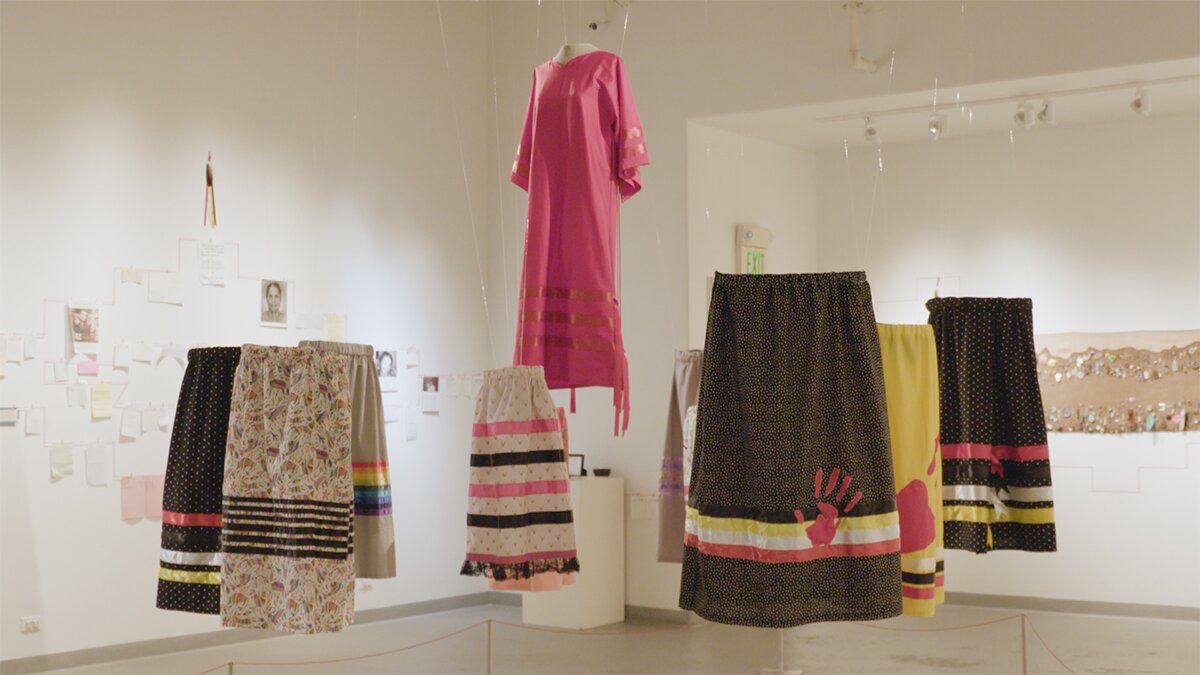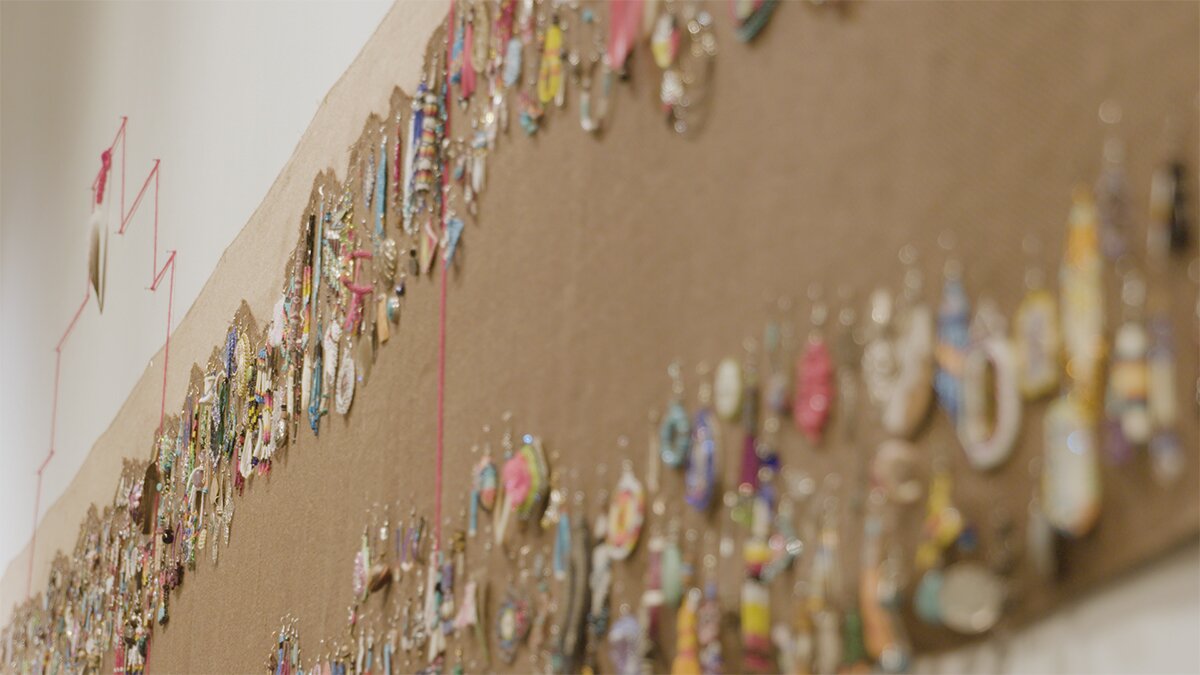'Sing Our Rivers Red' exhibit aims to raise awareness for missing and murdered Indigenous people

BOULDER, Colo. — There are about 1,500 American Indian and Alaska Native missing persons cases and 2,700 cases of “murder and nonnegligent homicide offenses” in the United States. And these are only the reported numbers.
“This epidemic is not only affecting [people] here in North America, but also South America and beyond,” said JayCee Beyale.
Beyale and SeeWalker are co-curators of visual art at the Dairy Arts Center and co-founders of Creative Nations Collective in Boulder. To raise awareness about missing and murdered Indigenous women, girls, Two-Spirit people, and men, Beyale and SeeWalker co-created “Sing Our Rivers Red," on display at the Dairy Arts Center through October 15. The multifaceted exhibition is the first of its kind by the Creative Nations Collective. The collective, also home to artists Kelly Holmes, Walt Pourier, and Tanaya Winder, supports Indigenous artists and aims to heal through creativity and art.
“Indigenous voices matter,” said Beyale. “With this show, you know, it's providing a platform…Art. It's the most powerful way we could possibly do that.”
In the center of the exhibit floats empty skirts and a lone dress. SeeWalker created most of the skirts and envisioned the symbolism the hollowed-out garments would have. The skirts, called ribbon skirts, are also specific to Indigenous women, and are a symbol of Indigenous women, according to SeeWalker.
“We wear those when we go into ceremony, we wear those when we go to events to bring awareness, we wear those to honor” she added.

From fashion pieces to paintings, the exhibit is visually engaging. And it all started with a box of earrings.
“We were given a box of earrings several months ago from one of our colleagues and friends, Tanaya Winder, who started this art exhibition that traveled around starting in 2015,” recalled SeeWalker.
There were two parts to the traveling exhibit which SeeWalker and Beyale brought together. In addition, they asked the public to share earrings and ending up with about 5,000 pieces. The earrings are displayed across two entire walls of the exhibit on a burlap to represent missing and murdered Indigenous people.
But Beyale points out, “For us as Indigenous artists, there's a way for us to do this a little bit more at a deeper level than it being just the surface value of what the image is representing.”
“Native women love their earrings,” added SeeWalker. “The beadwork is very important in our culture. And so, kind of having that missing earring, the missing piece to the other side… It’s very symbolic. You're missing something that was really important to you, but you still have this other side to it. How do you move past and accept that you're missing the piece and be able to kind of move forward with that?”

Another layer of the earring display lies in the artistry. Beyale noted, “There's a lot of artists represented on that burlap. Yes, there are a limited amount of artist recognized in this show, but I think there's even hundreds more that are being represented on that burlap too as well… So, there's a lot of power in this show on a spiritual level for me.”
The emotion felt in the Indigenous community can seen and felt through every aspect of the exhibit, especially on the note wall.
"The note wall that we have up there, folks that sent in a lot of the earrings also sent in letters, notes, photos of their missing are murdered, loved ones. And so that really kind of brings a personal touch to how this really has affected people in a real way,” SeeWalker said.
Weaving between the note wall and earrings is a long, red string of yarn. To Beyale and his Navajo culture, it represents a spirit line.
“When women weave rugs—often men weave rugs too—that spirit line is an exit point. So, whenever they create woven rug, their spirit is not trapped within that rug itself, that there's this continuation of the spirit continually traveling and everything else that they do create,” Beyale said. “So, it's really having that kind of exit point in allowing the spirit, you know, that are in a way present here to, to really have a place to be and feel at peace.”
SeeWalker thinks the exhibit has been very healing for people affected by the epidemic. When they held a private opening for Indigenous community members, she remembers a family found their daughter’s earring tucked into the burlap.
“It was right directly underneath one of the eagle feathers that is above the lap. And she kind of started to get teary-eyed and she said, ‘It's really hard all these years to still come to acceptance that she's gone, and in the way that she left this world,'” said SeeWalker.
“For me,” she continued, “out of this whole entire exhibition that moment and having that personal connection and being able to converse with somebody who's been part of the show who been personally touched by this problem in Indian country was really special and meaningful and I know that the work that we're doing is healing.”
“This is an existence, not only just in the US, Canada, Mexico, but worldwide in Indigenous populations. It's a very big problem,” SeeWalker continued.
She often gets asked the question, “what can I do to help?” Her answer: to spread awareness, talk about the issue, and make sure people know it’s a problem.
Beyale concluded, “we are still here, we still exist, and...our voices do matter."
While the full exhibit ends July 31, the earring and ribbon skirt installations and a select few pieces of other artwork will be on display until October 15, right after Indigenous Peoples Day on October 11.
Clarissa Guy is a multimedia journalist at Rocky Mountain PBS. You can reach her at clarissaguy@rmpbs.org.